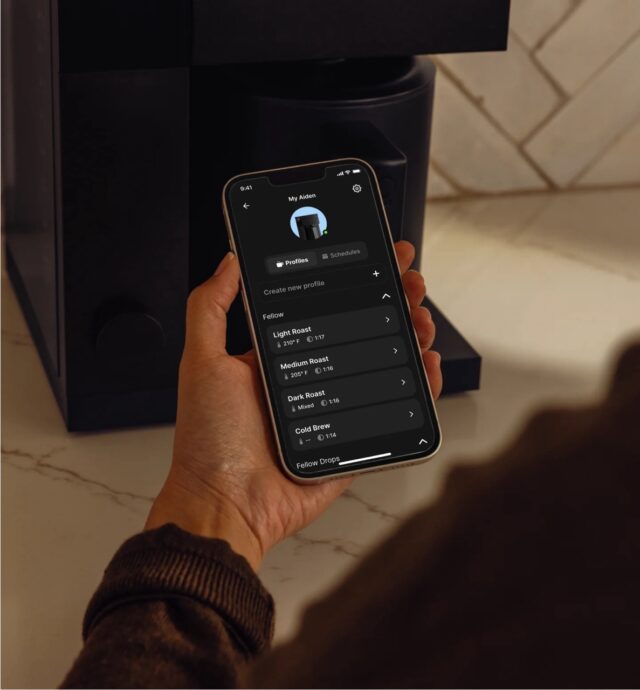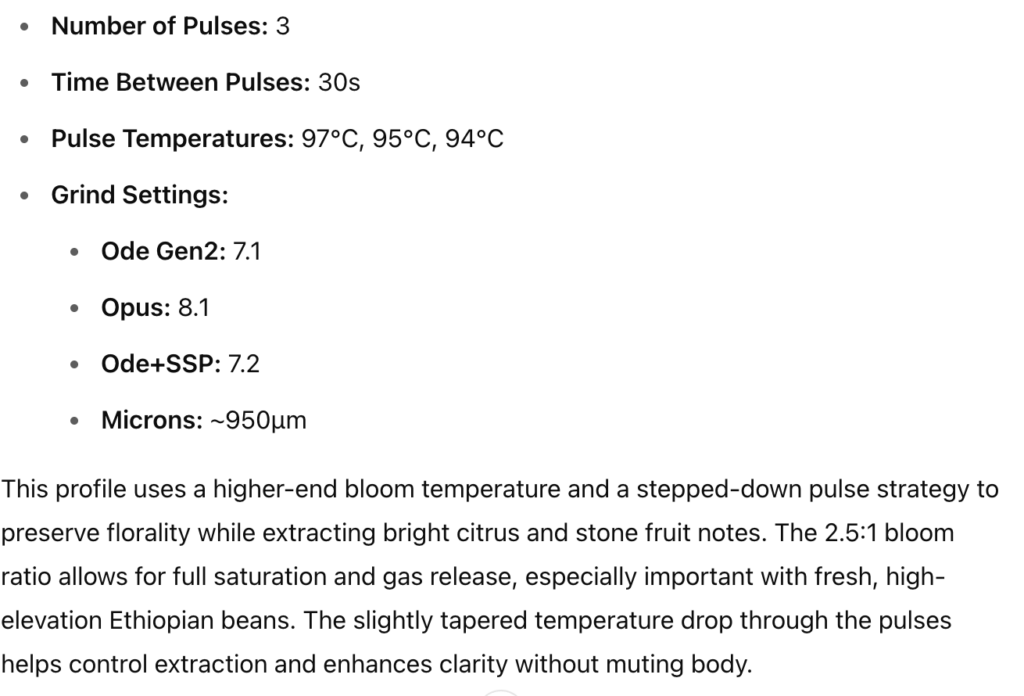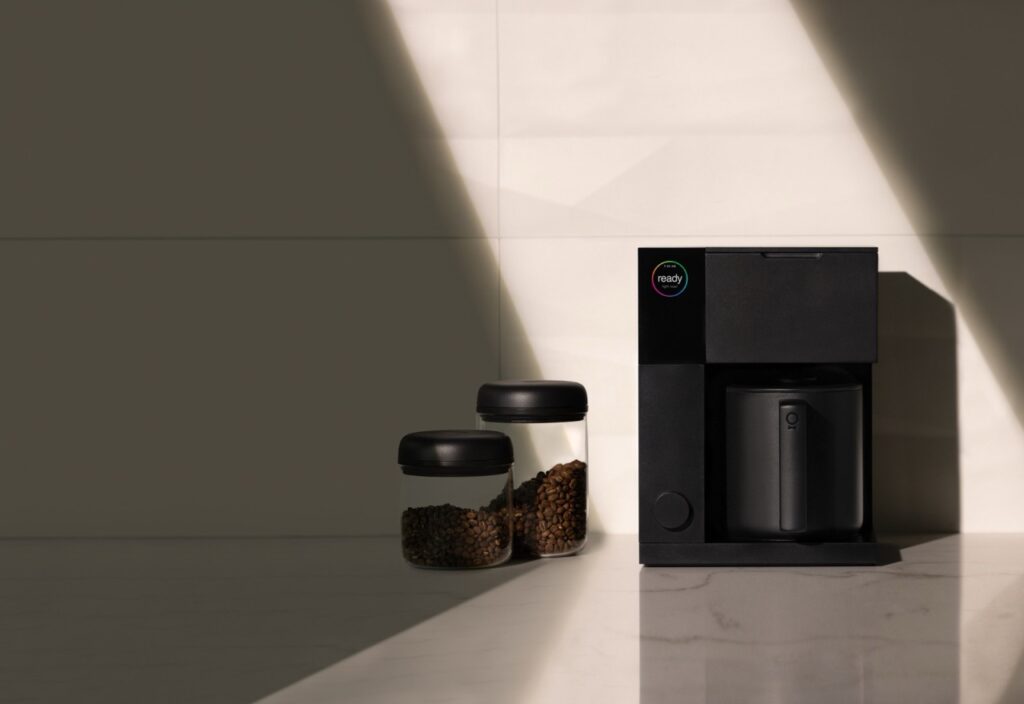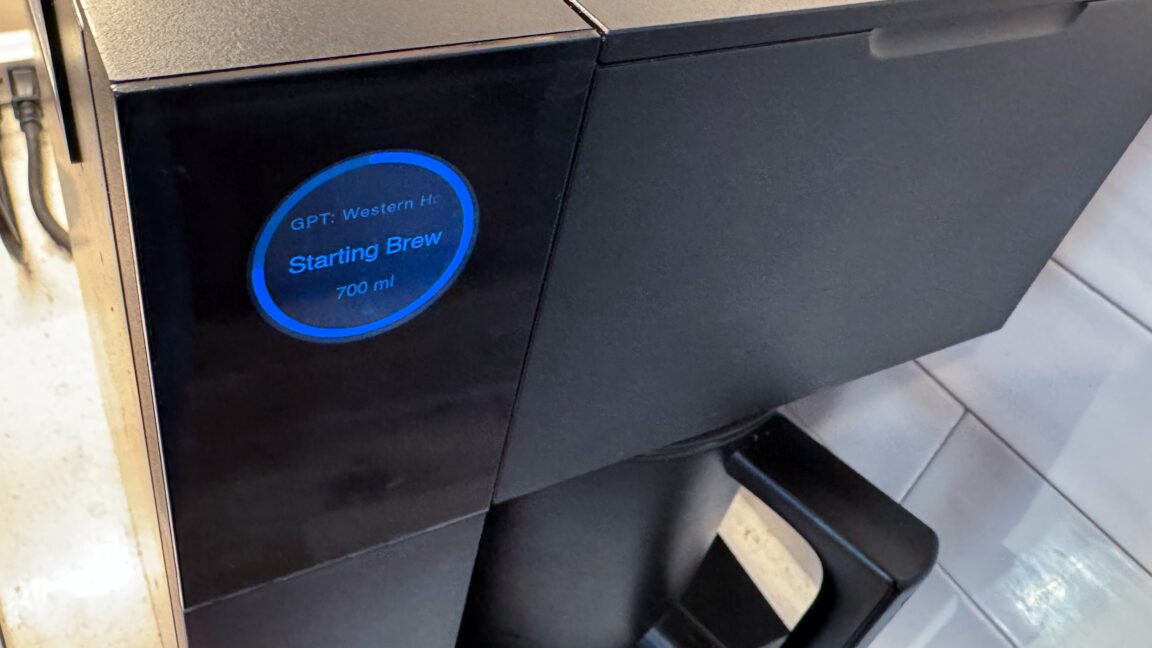(Ars contacted Fellow Products for comment on AI brewing and profile sharing and will update this post if we get a response.)
Opening up brew profiles

Credit:
Fellow Products
Fellow’s brew profiles are typically shared with buyers of its “Drops” coffees or between individual users through a phone app.
Credit:
Fellow Products
Aiden profiles are shared and added to Aiden units through Fellow’s brew.link service. But the profiles are not offered in an easy-to-sort database, nor are they easy to scan for details. So Aiden enthusiast and hobbyist coder Kevin Anderson created brewshare.coffee, which gathers both general and bean-based profiles, makes them easy to search and load, and adds optional but quite helpful suggested grind sizes.
As a non-professional developer jumping into a public offering, he had to work hard on data validation, backend security, and mobile-friendly design. “I just had a bit of an idea and a hobby, so I thought I’d try and make it happen,” Anderson writes. With his tool, brew links can be stored and shared more widely, which helped both Dixon and another AI/coffee tinkerer.
Gabriel Levine, director of engineering at retail analytics firm Leap Inc., lost his OXO coffee maker (aka the “Barista Brain”) to malfunction just before the Aiden debuted. The Aiden appealed to Levine as a way to move beyond his coffee rut—a “nice chocolate-y medium roast, about as far as I went,” he told Ars. “This thing that can be hyper-customized to different coffees to bring out their characteristics; [it] really kind of appealed to that nerd side of me,” Levine said.
Levine had also been doing AI stuff for about 10 years, or “since before everyone called it AI—predictive analytics, machine learning.” He described his career as “both kind of chief AI advocate and chief AI skeptic,” alternately driving real findings and talking down “everyone who… just wants to type, ‘how much money should my business make next year’ and call that work.” Like Dixon, Levine’s work and fascination with Aiden ended up intersecting.
The coffee maker with 3,588 ideas


Levine’s Aiden Profile Creator is a ChatGPT prompt set up with a custom prompt and told to weight certain knowledge more heavily. What kind of prompt and knowledge? Levine didn’t want to give away his exact work. But he cited resources like the Specialty Coffee Association of America and James Hoffman’s coffee guides as examples of what he fed it.
What it does with that knowledge is something of a mystery to Levine himself. “There’s this kind of blind leap, where it’s grabbing the relevant pieces of information from the knowledge base, biasing toward all the expert advice and extraction science, doing something with it, and then I take that something and coerce it back into a structured output I can put on your Aiden,” Levine said.
It’s a blind leap, but it has landed just right for me so far. I’ve made four profiles with Levine’s prompt based on beans I’ve bought: Stumptown’s Hundred Mile, a light-roasted batch from Jimma, Ethiopia from Small Planes, Lost Sock’s Western House filter blend, and some dark-roast beans given as a gift. With the Western House, Levine’s profile creator said it aimed to “balance nutty sweetness, chocolate richness, and bright cherry acidity, using a slightly stepped temperature profile and moderate pulse structure.” The resulting profile has worked great, even if the chatbot named it “Cherry Timber.”
Levine’s chatbot relies on two important things: Dixon’s work in revealing Fellow’s Aiden API and his own workhorse Aiden. Every Aiden profile link is created on a machine, so every profile created by Levine’s chat is launched, temporarily, from the Aiden in his kitchen, then deleted. “I’ve hit an undocumented limit on the number of profiles you can have on one machine, so I’ve had to do some triage there,” he said. As of April 22, nearly 3,600 profiles had passed through Levine’s Aiden.
“My hope with this is that it lowers the bar to entry,” Levine said, “so more people get into these specialty roasts and it drives people to support local roasters, explore their world a little more. I feel like that certainly happened to me.”
Something new is brewing

Having admitted to myself that I find something generated by ChatGPT prompts genuinely useful, I’ve softened my stance slightly on LLM technology, if not the hype. Used within very specific parameters, with everything second-guessed, I’m getting more comfortable asking chat prompts for formatted summaries on topics with lots of expertise available. I do my own writing, and I don’t waste server energy on things I can, and should, research myself. I even generally resist calling language model prompts “AI,” given the term’s baggage. But I’ve found one way to appreciate its possibilities.
This revelation may not be new to someone already steeped in the models. But having tested—and tasted—my first big experiment with willfully engaging with a brewing bot, I’m a bit more awake.
This post was updated at 8:40 a.m. with a different capture of a GPT-created recipe.

